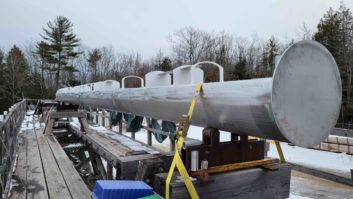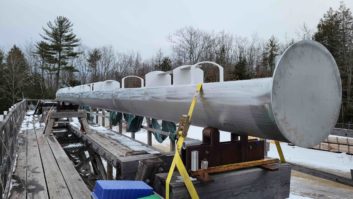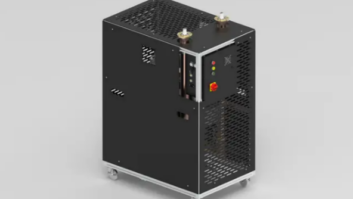 FM broadcasters soon will have a new and unfamiliar option when shopping for broadcast antennas. Dielectric has announced it will introduce a pylon FM antenna.
FM broadcasters soon will have a new and unfamiliar option when shopping for broadcast antennas. Dielectric has announced it will introduce a pylon FM antenna.
It said the FMP line will be “the broadcast industry’s first slot cavity microstrip FM antenna product family.” Dielectric says pylon antennas, which are used in television, are notable for high efficiency, low windload, multicasting capabilities, pattern flexibility and small tower footprint.
But VP/GM Keith Pelletier said that in the past, the cylindrical attributes of pylons produced narrow bandwidth characteristics that were impractical for FM signals.
“We have now adapted what was long a solution for mostly single-channel TV operations for both broadband TV and FM broadcasting, which very much differentiates our product portfolio from competitors.”
He cited several factors that allowed Dielectric to offer a pylon for full-band FM operation.
They include reducing the antenna Q factor, which he said improves the bandwidth from one to 20 percent; and stabilizing the H:V ratio across the band.
[Check Out More Products at Radio World’s Products Section]
“The 20 percent bandwidth translates to full FM band operation, which is the key goal of the FMP antenna’s design,” the company wrote.
“Dielectric has also included its patented parasitic dipole, which adds a vertical component to the existing horizontal signal. This creates more pattern options for FM broadcasters, including elliptical and circular polarization, and contributes to the substantial bandwidth increase.”
The company says FMP antennas use 60 percent fewer parts than equivalent ring-style antennas, which improves reliability.
“The pylon design also provides broadcasters and tower crews with top-mounting options, in addition to the traditional side-mounted configurations of ring antennas,” it continued.
“This is ideal for high-power FM stations that want a true top-mounted omnidirectional antenna. The FMP can handle input powers of 100 kW and higher, which also makes the antenna excellent for combined operation of multiple stations.”
The FMP designs use full-wavelength spacing between elements, so fewer of them are needed. Antennas are built in four-layer building blocks and can be increased to eight or 12 bays to suit higher power requirements and elevation pattern gains.
The company noted that the antenna design process was done in a virtual environment using using High Frequency Simulation Software, and then built to validate the designs.
The company will be talking about the new antenna line at its booth at the upcoming NAB Show.
Dielectric NAB Show Booth: W7107











